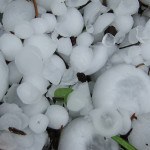The Property Casualty Insurers Association of America offers the following tips to help salvage your home or business and minimize further damage that has resulted from Hurricane Katrina.
* First and foremost, if holes have been torn in your roof or your windows are broken, be sure to cover them as quickly as possible so that wind and rain don’t cause further damage. Keep all receipts for anything you buy for that purpose so you can submit them to your insurance company later.
* Report all damage to your insurance company or agent as soon as you can. To settle your claim more quickly and accurately, it will help if you have as much information as possible about your damaged possessions when your insurance adjuster comes to look at your property.
* Make a list of damaged items. If possible, put together a set of records, such as receipts, bills and photographs, to establish the age of everything that needs to be replaced or repaired. Identify the structural damage to your home and make a list of everything you would like to show the adjuster.
* Don’t throw out damaged furniture or other expensive items. The adjuster will want to see them. It also is a good idea to take photographs of the damage before you start cleaning it up.
If the hurricane caused flooding in your home, there are certain things you can do to minimize the damage:
* Shovel or scrape the mud off your floors, furniture and walls before the mud dries. Then hose down the walls with clean water, starting from the ceiling.
* Major appliances, such as refrigerators and stoves, can be washed and dried completely. In most cases, they will not be damaged unless they were operating at the time the water covered them.
* Diluted chlorine bleach can be used to clean household items, appliances, walls and floors. This also will help control odors.
* Wood furniture should be dried outdoors, but not in direct sunlight. Remove drawers and other moving parts before they dry.
* A flooded basement should be pumped gradually to prevent structural damage. Pump out about a third of the water per day.
* Food utensils and equipment should be washed thoroughly and sterilized before you use them. Any food that is open and exposed to flood waters should be discarded.
Was this article valuable?
Here are more articles you may enjoy.

 Jury Awards $80M to 3 Former Zurich NA Employees for Wrongful Termination
Jury Awards $80M to 3 Former Zurich NA Employees for Wrongful Termination  Report Using Aerial Imagery Keys in on Hailstorm Risks to Colorado Homes
Report Using Aerial Imagery Keys in on Hailstorm Risks to Colorado Homes  SC High Court Strikes ‘Troubling’ Denial of Comp Claim, Says Can’t Be Based on Stats
SC High Court Strikes ‘Troubling’ Denial of Comp Claim, Says Can’t Be Based on Stats  California Sees Two More Property Insurers Withdraw From Market
California Sees Two More Property Insurers Withdraw From Market 